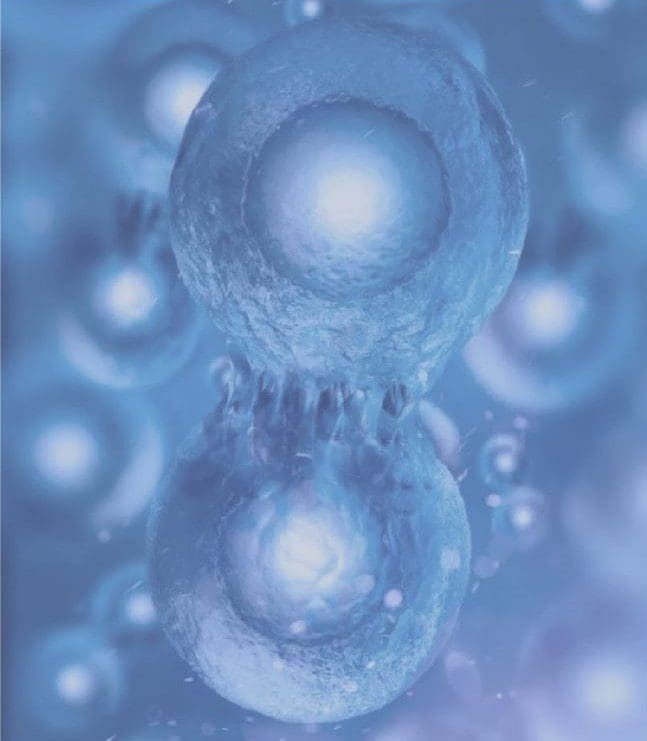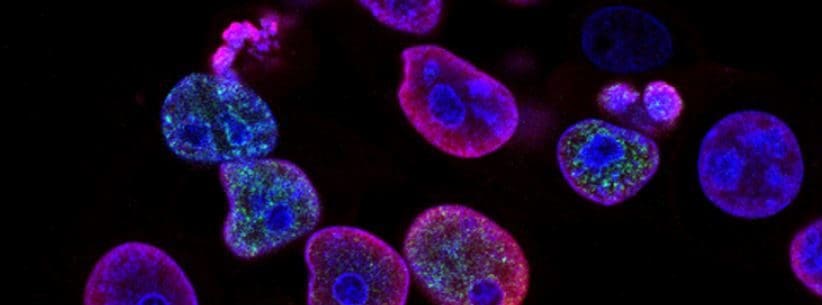Table of Contents
Introduction
The body has trillions of cells that help maintain order for the body and make sure that it is functioning properly. The cells in the body help regulate growth development, making sure that the tissues of the muscles and organs are working and pumping blood to be circulated to each system. But when unwanted pathogens or fatal injuries damage the body and scar the tissue cells, then that is where stem cell therapy comes to the rescue. In this 2 part series, we will be giving an in-depth look at what are stem cells, where do they come from, and the type of stem cells that are associated with the body. Part 1 was taking a look at what is regenerative cellular treatment, what is regenerative medicine, a brief introduction of what are stem cells. By referring patients to qualified and skilled providers that specialized in regenerative cellular therapy, we work with affiliated clinics and distributor organizations, both internationally and nationally with the services that we offer. We find that education is the key to asking valuable questions to our providers. Dr. Jimenez DC provides this information as an educational service only. Disclaimer
Can my insurance cover it? Yes, in case you are uncertain here is the link to all the insurance providers we cover. If you have any questions, please call Dr. Jimenez at 915-850-0900.
What Are Stem Cells?

In part 1, it discussed what are stem cells in general terms. Stem cell research has been throughout the news and research shows that stem cell therapy is a form of regenerative medicine that can help repair damaged tissues, specifically, the heart, nerve cells, and even blood cells. Other research studies show that stem cells can provide a better understanding to professionals that specialized in stem cell therapy to develop cell-based therapies for many chronic illnesses like diabetes, heart failure, and many other chronic conditions that harm the body. Stem cells are the body’s raw material that can help generate new cells to replace the damaged ones in the body.
Where Do They Come From?
So the body has trillions of cells that make sure that the body is working properly. From infancy to seniority the body is always creating new cells and it is their job to maintain a properly functioning body. Studies show that stem cells are defined as the precursor cells that have the ability to self-renew and generate mature cell types in the body. Not only that, stem cells are derived from the prenatal tissue of expecting mothers. They are obtained from healthy, carefully screened mothers at the time of scheduled cesarean section. The consent is obtained at approximately the eighth month of pregnancy and the criteria for donation are established by the Food and Drug Administration, the Center for Disease Control, and the American Association of Tissue Banks. The criteria include a thorough medical and social screening and a complete panel of serological testing to ensure the donor is free from transmissible diseases. At the time of birth, a trained technician will be present and will collect the amniotic fluid, placenta, and umbilical cord which are then sent to the processing facility; where they will be cultured, processed and retested prior to release for clinical use.
Are Our Bodies Are A Stem Cell?
In short yes as research shows that stem cells have the ability to not only build every tissue in the human body, but they can differentiate into specific cell types that can have amazing potential for future therapeutic uses for tissue regeneration and repair to the body. The body needs those cells to heal, repair, and regenerate things when a person gets injured. However, the body also needs those cells to just maintain itself. As people continue to age and use up these resources, it becomes harder and harder for the body to fix injuries, repair itself, and even maintain itself.
Types Of Stem Cells

Since stem cells have the ability for regeneration, they actually have to display at least 2 essential characteristics in order to fall into the definition of stem cells. One is that they have to have the ability to have an unlimited amount of self-renewal to produce progeny exactly as the original cell and two is that they have to rise to a special cell type to become part of a healthy body. There are 3 types of stem cells that help the body to regenerate damaged tissue and renew the integrity of the cells. They are:
- Embryonic stem cells
- Adult stem cells
- Mesenchymal stem cells
Embryonic Stem Cells
Embryonic stem cells are pluripotent cells in the inner cell mass of a developing embryo. Studies have found that embryonic stem cells are a valuable tool for physicians that specialized in stem cell therapy treatments since it involves specialized cells and the establishment of organ structures. The beneficial properties of embryonic stem cells are that they can not only be divided into more stem cells but can be used to regenerate diseased tissues and organs that have been affected in the body.
Adult Stem Cells
Also known as somatic stem cells, adult stem cells have resided in specific tissues and possess many fundamental properties of stem cells that provide self-renewal capacity and multipotency. Studies found that even though adult cells are primitive cells, they are connected to supporting cells that help protect the body from external harmful stimuli and are kept quiescent until an appropriate activating signal arrives. Some of the beneficial properties that adult stem cells provide are that they are the safest for therapeutic utilization and can help repair damaged cartilage in the body.
Mesenchymal Stem Cells
Mesenchymal stem cells or MSC are multipotent stromal cells that are in the body that can transform into a variety of cells that can help with any procedures that are dealing with injuries to the body. MSC is found in perinatal tissues that don’t elicit a T cell response and research shows that MSC can be isolated from various tissues like adipose tissue, bone marrow, and menstrual blood that has the ability to renew and exhibit multilineage differentiation to the body. Another study showed that MSC can produce an abundance of useful growth factors and cytokines, while also having the ability to repair endogenous tissue in the body since it can clearly diminish with age. Not only that but MSC does not trigger an immune response and is tolerated by the body’s immune system. Studies show that MSC is the ideal cell source for tissue regeneration in the body since its immunological properties are anti-inflammatory and can contribute to their role as immune tolerant agents. Since there are many functions that MSC can provide for the body, the four most important functions that they can control are:
- Control inflammation
- Modulating the immune system
- Stimulate cell regeneration
- Reducing tissue scarring
Conclusion
All in all, stem cells have many beneficial properties that can help the body repair and regenerate damaged cells, tissues, and organs. Through the usage of stem cell therapy by high professional specialists, stem cells can recover the body naturally and heal it over time from chronic illness or injuries. When the body goes through trauma from an injury or unwanted pathogens develop into chronic illnesses over time, stem cells can help by replacing the damaged cells. It is equally
important in regenerative medicine therapies that growth factors, cytokines, structural proteins, chemokines, and other components are needed to regenerate the body and support this entire process. Without stem cell therapy, there will be no fixing the problem, and surgery is the only option, thus inflicting more damage that further depletes the body’s own regenerative resources.
References
Biehl, Jesse K, and Brenda Russell. “Introduction to Stem Cell Therapy.” The Journal of Cardiovascular Nursing, U.S. National Library of Medicine, 2009, www.ncbi.nlm.nih.gov/pmc/articles/PMC4104807/.
Chagastelles, Pedro C, and Nance B Nardi. “Biology of Stem Cells: An Overview.” Kidney International Supplements, Nature Publishing Group, Sept. 2011, www.ncbi.nlm.nih.gov/pmc/articles/PMC4089750/.
Ding, Dah-Ching, et al. “Mesenchymal Stem Cells.” Cell Transplantation, U.S. National Library of Medicine, 2011, pubmed.ncbi.nlm.nih.gov/21396235/.
Han, Yu, et al. “Mesenchymal Stem Cells for Regenerative Medicine.” Cells, MDPI, 13 Aug. 2019, www.ncbi.nlm.nih.gov/pmc/articles/PMC6721852/.
Institute of Medicine (US) Committee on the Biological and Biomedical Applications of Stem Cell Research, National Research Council (US). “Embryonic Stem Cells.” Stem Cells and the Future of Regenerative Medicine., U.S. National Library of Medicine, 1 Jan. 1970, www.ncbi.nlm.nih.gov/books/NBK223690/.
Montagnani, Stefania, et al. “Adult Stem Cells in Tissue Maintenance and Regeneration.” Stem Cells International, Hindawi Publishing Corporation, 2016, www.ncbi.nlm.nih.gov/pmc/articles/PMC4754501/.
Pittenger, Mark F, et al. “Mesenchymal Stem Cell Perspective: Cell Biology to Clinical Progress.” NPJ Regenerative Medicine, Nature Publishing Group UK, 2 Dec. 2019, www.ncbi.nlm.nih.gov/pmc/articles/PMC6889290/.
Professionals, NIH. “Stem Cells.” National Institutes of Health, U.S. Department of Health and Human Services, 27 Jan. 2016, www.nih.gov/about-nih/what-we-do/nih-turning-discovery-into-health/stem-cells.
Ray, Pritha, et al. “Application of Adult Stem Cells in Medicine.” Stem Cells International, Hindawi Publishing Corporation, 2015, www.ncbi.nlm.nih.gov/pmc/articles/PMC4539501/.
Staff, Mayo Clinic. “Frequently Asked Questions about Stem Cell Research.” Mayo Clinic, Mayo Foundation for Medical Education and Research, 8 June 2019, www.mayoclinic.org/tests-procedures/bone-marrow-transplant/in-depth/stem-cells/art-20048117.
Vazin, Tandis, and William J Freed. “Human Embryonic Stem Cells: Derivation, Culture, and Differentiation: A Review.” Restorative Neurology and Neuroscience, U.S. National Library of Medicine, 2010, www.ncbi.nlm.nih.gov/pmc/articles/PMC2973558/.
Disclaimer
General Disclaimer
Professional Scope of Practice *
The information herein on "An Insightful Look Into Regenerative Cellular Treatment | Part 2" is not intended to replace a one-on-one relationship with a qualified health care professional or licensed physician and is not medical advice. We encourage you to make healthcare decisions based on your research and partnership with a qualified healthcare professional.
Blog Information & Scope Discussions
Our information scope is limited to Chiropractic, musculoskeletal, physical medicines, wellness, contributing etiological viscerosomatic disturbances within clinical presentations, associated somatovisceral reflex clinical dynamics, subluxation complexes, sensitive health issues, and/or functional medicine articles, topics, and discussions.
We provide and present clinical collaboration with specialists from various disciplines. Each specialist is governed by their professional scope of practice and their jurisdiction of licensure. We use functional health & wellness protocols to treat and support care for the injuries or disorders of the musculoskeletal system.
Our videos, posts, topics, subjects, and insights cover clinical matters, issues, and topics that relate to and directly or indirectly support our clinical scope of practice.*
Our office has reasonably attempted to provide supportive citations and has identified the relevant research study or studies supporting our posts. We provide copies of supporting research studies available to regulatory boards and the public upon request.
We understand that we cover matters that require an additional explanation of how it may assist in a particular care plan or treatment protocol; therefore, to further discuss the subject matter above, please feel free to ask Dr. Alex Jimenez, DC, or contact us at 915-850-0900.
We are here to help you and your family.
Blessings
Dr. Alex Jimenez DC, MSACP, RN*, CCST, IFMCP*, CIFM*, ATN*
email: coach@elpasofunctionalmedicine.com
Licensed as a Doctor of Chiropractic (DC) in Texas & New Mexico*
Texas DC License # TX5807, New Mexico DC License # NM-DC2182
Licensed as a Registered Nurse (RN*) in Florida
Florida License RN License # RN9617241 (Control No. 3558029)
Compact Status: Multi-State License: Authorized to Practice in 40 States*
Presently Matriculated: ICHS: MSN* FNP (Family Nurse Practitioner Program)
Dr. Alex Jimenez DC, MSACP, RN* CIFM*, IFMCP*, ATN*, CCST
My Digital Business Card




















